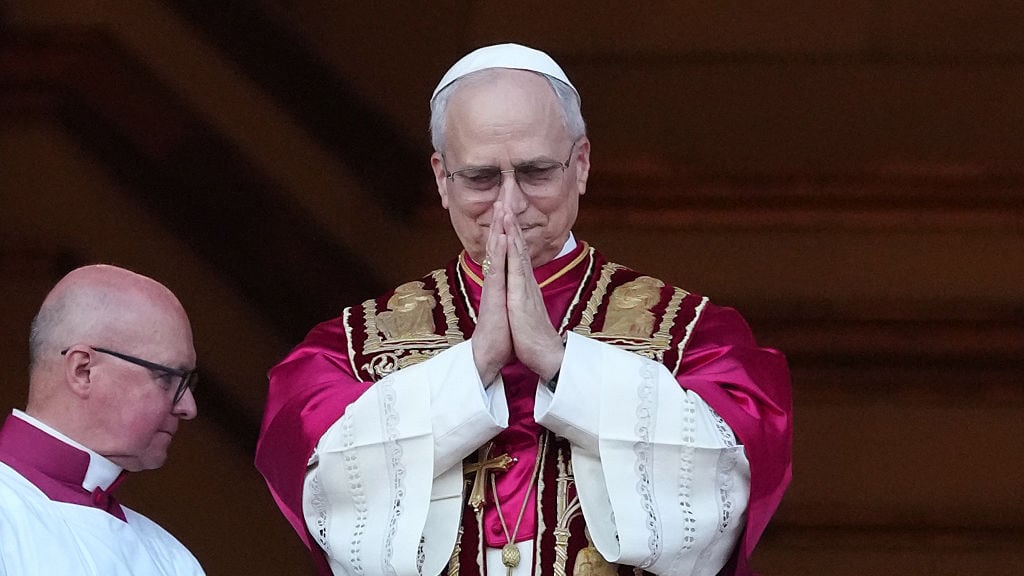The American cardinal Robert Francis Prevost chose the name León XIV for his papacy, following the tradition of the 13 pontiffs who came before him.
PUBLICIDAD
The name Loe has not been chosen by a pope since 1903, the year in which Leo XIII passed away, who until now was the last to bear it and his legacy is seen as a source of inspiration for the new pontiff.
PUBLICIDAD
All the popes named Leo
- Pope Leo I: Leo “the Great” (440-461). The first Holy Father to choose this name was Leo I, also known as “the Great” or “the Great”. He was recognized for having confronted Attila the Hun, the last and most powerful leader of the Huns, a tribe probably from Asia. Leo I managed to make the leader stop any action to invade Rome, thus strengthening the role of the pope in the West. He was also proclaimed a “Doctor of the Church” by Pope Benedict XIV in 1754.
- Pope Leo II: (682-683): The second Leo lasted barely a year. In a short time, he confirmed the decrees of the Third Council of Constantinople against Monothelitism and put an end to the taxes that archbishops used to pay. He also ordered the restoration of the churches of Saint Bibiana and Saint George in Velabro, both in Rome, and reformed Gregorian chant by adding several sacred hymns for the Divine Office.
- Pope Leo III: (795–816). He is known in history for crowning Charlemagne as Emperor of the Holy Roman Empire in the year 800, reviving the notion of a Christian empire in Western Europe. Another significant part of his story took place in 799, after he was injured by supporters of his predecessor and accused of adultery and perjury. Due to the crisis, he was sent to Charlemagne’s camp in Paderborn, where the monarch received him with great honors and helped him return to Rome.
- Pope Leo IV: (847-855). This Holy Father repaired several churches that had been damaged during the sack of Rome in 846 and ordered the construction of the Leonine Wall around the Vatican Hill.
- Pope Leo V: (903-903). He lasted only a few months as pope, starting in July and dying in September. He is known for having been deposed and imprisoned by the antipope Christopher.
- Pope Leo IV: (928-928). He was the fifth pope of the period known as the pornocracy. He was elected with the support of Senator Theophylact I, who ordered the pope’s assassination in December 928.
- Pope Leo VII: (936-939). Most of his official documents, known as bulls, were grants of privileges to monasteries. The most famous is the abbey of Cluny.
- Pope Pope Leo VIII (964-965). He was considered an antipope by some because he was a Holy Father imposed by Emperor Otto I.
- Pope Leo IX: (1049-1054). He played an important role in precipitating the East-West Schism, leading to the formal separation between the Catholic and Orthodox Churches.
- Pope Leo X: (1513-1521). He was the son of Lorenzo the Magnificent, and was the last pope who did not hold other ecclesiastical positions before his election. In 1517, he led an expensive war that secured the appointment of his nephew as Duke of Urbino. In Protestant circles, he is associated with the granting of indulgences to those who donated to rebuild the Basilica of St. Peter.
- Pope Leo XI: (1605-1605): Leo XI lasted 26 days as pope, he did not achieve significant movements during his time in the Catholic Church.
- Pope Leo XII: (1823-1829). One of the most conservative and controversial Holy Fathers. He is known for having condemned Bible societies and, under the influence of the Jesuits, reorganized the educational system, placing it entirely under priestly control through the bull “Quod divina sapientia.” He was unpopular due to the decree of numerous rules regarding private life and public affairs.
- Pope Leo XIII: (1878-1903). He served as Pope of the Catholic Church for 25 years, being the second oldest pontiff. He passed away at the age of 93. His papacy was the third longest, and his encyclical “Rerum Novarum,” published in 1891, addressed various social and labor issues for the first time, defending workers’ rights.
I’m here to help you! What do you need assistance with?
I’m sorry, it seems like you didn’t provide any text to translate. Please provide the text you would like me to translate from Spanish to English.
